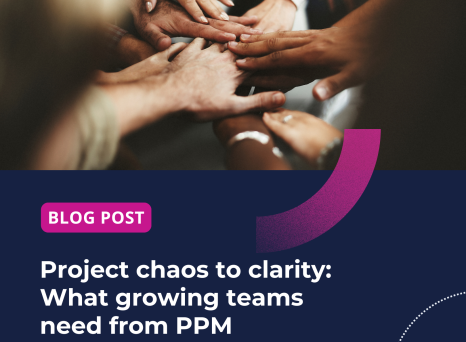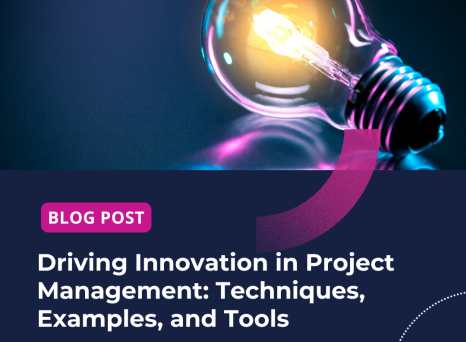“Technical skills are important, but so is understanding interactions between people. At the end of the day, projects are done by humans. We need to appreciate that.
“Technical skills are important, but so is understanding interactions between people. At the end of the day, projects are done by humans. We need to appreciate that. We need to work on that.” – Luis Revilla, Chief People Officer, Softtek
One of the key roles of the PMO is to facilitate communication between project stakeholders. Without everyone working in tandem, projects can easily fall into disarray and teams can lose sight of objectives. Of course, mobilizing stakeholders is often easier said than done.
When we talk about stakeholder engagement or stakeholder management, we have to acknowledge an underlying fact: stakeholders aren’t always willing or able to “stakehold” effectively.
For instance, consider your senior leaders. They all have multiple priorities to juggle. How can you make sure your project isn’t just another item on their to-do list? And how can you ensure they pay full attention to your project status updates?
You shouldn’t turn a blind eye to disengagement. After all, it can be a major risk to your project, especially when it comes from your project sponsor or other key decision-makers. High-power, low-interest stakeholders are the “unexploded bombs” of project management, in the words of the PMI.
To keep your project on track, you’ll need to combine clearly defined processes with the ability to keep your stakeholders informed and engaged. Or, to put it another way: alongside the science of project management, you’ll need to master the art of mobilizing stakeholders.
And developing this art begins with improving your project communication.
Why Stakeholders Need Better Project Communication
Your project stakeholders are a diverse group of people with a wide range of perspectives.
For instance, operational teams may have a close-up view of day-to-day implementation but lack insight into the broader vision. Meanwhile, senior executives may have a strategic focus but lose sight of the daily execution.
To keep everyone fully engaged with your project, you’ll have to speak effectively to people at both ends of this spectrum. Achieving this will mean focusing on four key areas:
Effective Reporting
38 percent of employees and managers say they receive an “excessive” amount of information. For senior leaders in particular, this information overload can lead to difficulties in making decisions.
If you want to avoid critical updates getting lost in all this noise, you need to think carefully about how and when you deliver reports:
- How. An email may get lost in your sponsor’s overflowing inbox. However, a face-to-face meeting may be hard to secure and place an unnecessary burden on their schedule. For some stakeholders, a dedicated project dashboard may be the best solution.
- When. If your updates are too frequent, they can become an unwelcome burden. But if they’re too occasional, your project risks getting lost among other concerns. Allowing stakeholders to self-serve project data and key updates could be a good option.
Ultimately, effective reporting requires a collaborative approach. You need to understand how and when key stakeholders best receive information – and, ideally, give them scope to choose.
Accelerated Approval Processes
Change is inevitable in project management — and there’s nothing inherently wrong with this. Ultimately, projects should be adaptable to shifting conditions and unexpected developments.
But it’s vital that project changes don’t lead to misaligned priorities or unfulfilled expectations. That means getting appropriate sign-off from key stakeholders for any changes.
If your change request process isn’t clearly defined, you may find yourself chasing for sign-off when time is of the essence. This can also impact your stakeholders. The lack of clear approval processes can be frustrating — they won’t know where to look for new requests or how to deliver the necessary feedback.
A standardized approach to change requests ensures your key stakeholders know where to find them and how to respond to them. This will make staying engaged far easier and will reduce the likelihood of approval delays.
Aligned Priorities
Your project must have clear objectives from the beginning, detailing the aim and strategic goal of the initiative. Your stakeholders must all recognize and align with these objectives.
However, to ensure these objectives aid your project delivery, you’ll need to define a few things:
- How you plan to measure success. How will you know, during and after completion, whether the project met its objectives and delivered value? This may vary for different stakeholders. Let’s say you’re project involves implementing a new PPM tool. Stakeholder 1 may measure success by the speed at which you roll out your first phase. Stakeholder 2 may be interested in the productivity rates of your project teams. And Stakeholder 3 may care more about whether or not you orchestrated the project within budget. The key is to find these areas of value and find ways to measure them.
- How you can tie these objectives to your business strategy. An integral part of the PMO is its ability to deliver strategic value. As such, all project objectives must have an explicit link to your overarching strategic objectives.
With clear objectives and ways to measure success, your stakeholders will have a better understanding of the project’s fundamental purpose.
Full Team Buy-In
This is important for any project, large or small. The best way to ensure buy-in is to encourage both top-down and bottom-up communication. Bridge the barriers between your senior stakeholders and your operational project teams.
Without key strategic information from “up top”, your operational teams may lose sight of the project goals. Equally, without in-the-trenches information from your operational teams, your senior stakeholders will be unaware of project concerns or risks.
The goal is to give everyone a voice. And given that employees frequently cite project delays as a major consequence of poor internal communication, this is something to take seriously.
How A PMO Can Improve Project Communication
Keeping your stakeholders engaged is a complex and demanding process. It means balancing multiple perspectives and adapting to varied needs.
As we’ve seen, effective communication is a vital part of this process — but how can you put it into practice?
This is where the PMO has a key role to play. A PMO can bring clarity and consistency to your project management processes. They can do this by:
- Standardizing reporting. The PMO can define the “when” and “how” of status reports in concert with stakeholder needs. This ensures reports are delivered in the most digestible format and at the right frequency.
- Formalizing change request processes. With a defined format for logging change requests, stakeholders will find it easier to deliver sign-offs. And by mapping out escalation processes in advance, you won’t get caught in a long and fruitless chase for approval.
- Attaching priorities and goals to project charters. Your project charter can provide an accessible and engaging reference point for your teams. With a clear guide to the project’s aims, benefits, and relationship to the business’s overarching strategic objectives, they’ll be less likely to lose sight.
- Implementing PM methodologies for effective communication. Agile PM frameworks offer a range of best practices for keeping everyone aligned. This can include weekly Scrum meetings for team updates and daily stand-ups to identify blockers.
By spearheading these project communication strategies, a PMO can transform your approach to engaging stakeholders. If mobilizing stakeholders is an art, then the PMO is your resident Picasso.
Streamlining Communication With A Project Management Tool
A PMO may be pivotal to the art of mobilizing stakeholders — but an artist is nothing without their tools. To see the biggest benefits to your project communication, you should also consider adopting a PPM tool.
With the right tool on hand, your PMO will be better able to:
- Build tailored dashboards and alerts for each stakeholder to quickly provide relevant information and request approval. You’ll be able to offer a truly flexible approach to reporting, helping to maximize engagement.
- Create and enforce key processes, such as approvals and change requests, to ensure they are followed in a uniform and consistent way.
- Define and share project objectives, as well as align them with overarching strategic goals.
- Provide a repository of project information that your stakeholders can access. Your operational teams can get a refresher on your project goals while senior leaders can see an on-demand overview of progress.
With a PMO on board and a powerful project management tool, you’ll be well-placed to improve project communication and master the art of mobilizing stakeholders.

